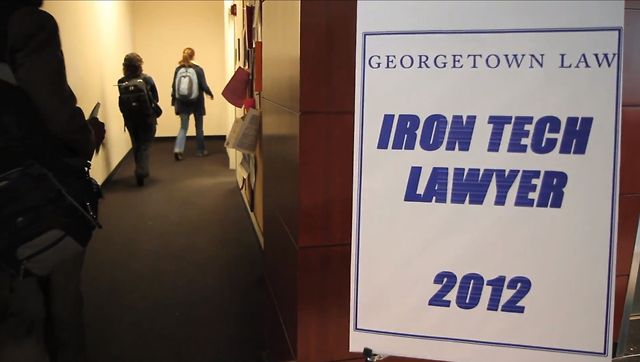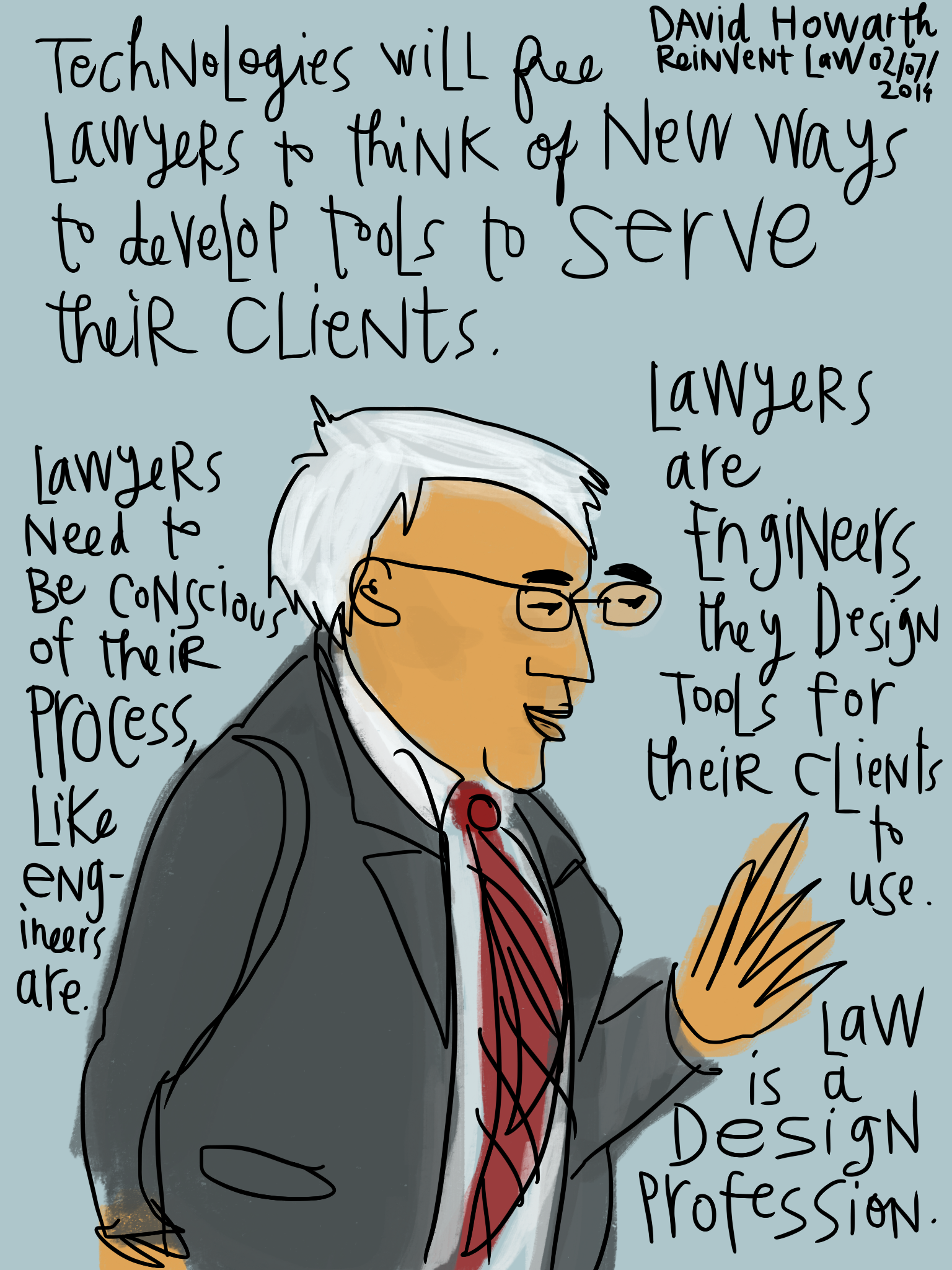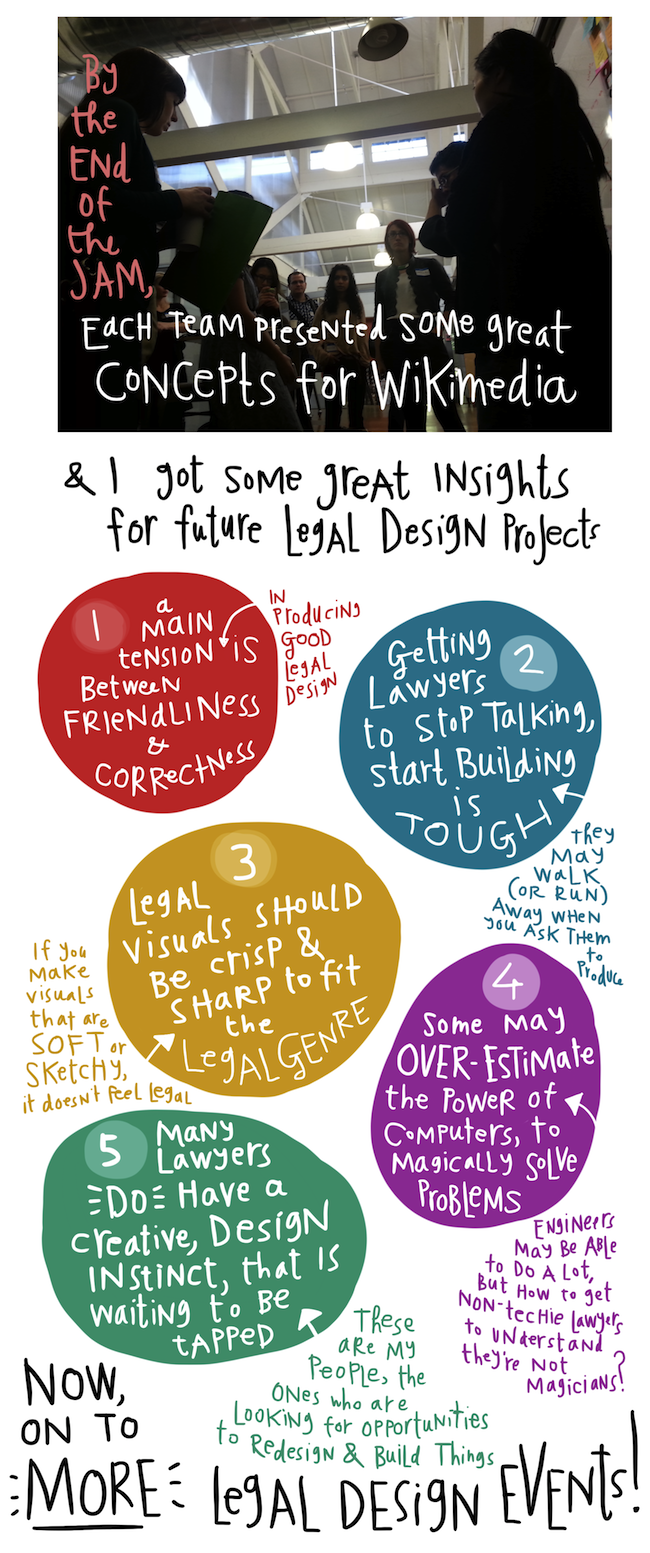Georgetown Law is holding its 2nd ‘Iron Tech’ Lawyer competition, in which students who took a semester seminar –“Technology, Innovation & Law Practice: An Experiential Seminar” — by Professor Tania Rostain and Law Librarian Roger Skalbeck. The second competition will be held on April 17 in Washington DC.
A video from Georgetown Law, giving an overview of last year’s program:
Coverage of last year’s apps competition by Nightly Business Report:
The apps seem mainly to be developed using a proprietary software system Neota Logic, that’s intended for non-coders to develop web apps — mainly to build ‘legal expert systems’.
From what I can tell based on the coverage, the apps seem to follow a pattern: make the software the ‘associate’ gathering information, and then have it generate a ‘memo’ which can be delivered to a real human lawyer, who takes this memo-report and can proceed with more well-informed lawyering.
The pattern:
- Ask the ‘client’ questions through software interfaces
- Adjust future questions based on previous responses
- At the end of the question-answer experience, deliver a report to the ‘client’ (or directly to a real lawyer) for future use.
This pattern is a similar one to those in use by the A2J Software authoring programs. It may be nice to see them side-by-side — or to actually see how these various projects could be synced together. I would love to see a website (perhaps, I should build it…) that has all of the projects and tools generated out of these various law school programs assembled together. Even if they have been abandoned before being brought to market (or made available on the web), they are of interest as concept designs.
The pattern of these apps clearly has some promise, having been built using the offline pattern of how an intake process would work at a legal clinic or sit down with a lawyer. I would love to see some more playfulness or radical rethinkings of what else could be done, to make the experience less clinical and more human. How can warmth, trust, and confidence be built into these systems — and how can they encourage deeper reflection and provoke better answers from the clients? It seems
A quote from the Neota blog on the class & competition:
Tanina’s courses give students experiential learning by making applications designed to be deployed to an active user community. Tanina and Roger can be regarded as the pioneers of The Maker Movement in law. Her students are learning the skills to make applications to deliver straightforward advice and/or to triage and more efficiently route tougher problems to those legal aid resources best able to deal with the issues identified during a logic driven online interview. Georgetown is creating a road map for the practice of law in the 21st century.
I am enjoying the comparisons to the Maker Movement & a Law-By-Design movement. At the Reinvent Law Silicon Valley conference earlier this month, there were a few mentions of the Law World taking inspiration from the 3D printer revolution and Makers around us — how can we build this DIY, tinkering, and hacking culture into Law? I can see this class & competition as a nice step forward.
What would be particularly valuable to gather, from this class are lessons learned. I understand law schools’ interests in trumpeting their programs as being innovative & progressive. But what is needed is a better understanding of where these type of classes fail, break down, don’t come together like they should.
Similar lessons learned could be drawn from some other law/design/tech classes I’ve been a part of — like the Law Without Walls program (based out of Univ. of Miami, but coming from law schools all over), or from the Ideas for a Better Internet classes (based out of Harvard & Stanford over the past 2 years).
These classes all generate a lot of interest and lots of creativity, but when the programs end — the ideas and all of the pain points of trying to get law students working to build better legal services all disappear into notebooks, hard drives, and trash cans. I want to hear from students and instructors about what really didn’t work, why many of the projects aren’t viable, what they would do differently next time, and what it would take to have these classes building viable, inspiring and creative approaches.
My last point: when building new tech to deliver access to justice, we don’t have to be constrained to replicating ‘offline’ processes ‘online’. The new tech gives us as legal-designers chance to explore this space as if it were new, and come up with radical new ways to deliver the outcomes that the process are about. Classes in the vein of the Iron Tech Lawyer should be teaching students not just how to structure an expert system — but also how to do the user research, brainstorming, and prototyping that will lead to creative leaps that can build amazing new legal products.




2 Comments
(perhaps, I should build it…)
Yeah!
You are certainly right that gathering lessons learned from courses like Tanina Rostain’s at Georgetown — and there now a good many — would be valuable to everyone. You might talk to John Mayer and Ron Staudt at CALI (the Center for Computer-Assisted Legal Instruction), who are, I think, working on a project to do exactly that.